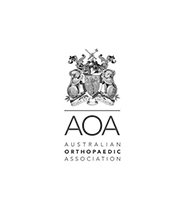Broken Collarbone
Clavicle fracture or broken collarbone is a the most commonly fractured bone in the human body. It is associated with high energy sports such as rugby, martial arts, cycling and motorbike riding.
A direct blow over the shoulde or fall on an outstretched arm may also cause the clavicle bone to break.
A broken clavicle causes difficulty in lifting your arm and sleeping.
How is a clavicle fracture diagnosed?
Clavicle fractures are diagnosed by taking a history, performing a physical examination and ordering imaging studies (X-ray ).

Treatment options for a clavicle fracture include:
- Non-operative
- Operative
Non-operative treatment involves:
- placing the arm in a sling to immobilize the bones and allow healing.
- Medications for pain relief, and
- physical therapy may prevent stiffness and weakness of the shoulder.
A broken clavicle bone usually heals without surgery, but if the bone ends have shifted out of place (displaced) surgery is an option.
Surgical treatment is performed to align the bone ends and hold them stable during healing.
It may be considered for
- multiple fractures,
- compound (open) fractures,
- Overlapping of the broken ends of bone (shortened clavicle)
- fractures associated with nerve or blood vessel damage and
- displaced fractures.
Clavicle Fracture Surgery
During this surgical procedure, the broken bone-ends are aligned into their normal position and screws in metal plates are used to hold the bone fragments in place.
These plates and screws are usually left in the bone. If they cause any irritation, they can be removed after fracture healing is complete.


Post Operative Care Plan
Following surgery, a sling will be worn for comfort only. Movement at waist level is encouraged early and above shoulder activity can begin once the wound has healed. Painkillers may be required for 3-5 days after surgery. Sutures are removed 10-14 days after surgery. Lifting is limited to 1kg until X-rays are reviewed at 8 weeks post after surgery.
Complications with Clavicle Fracture Surgery
Patients with diabetes and people who make use of tobacco products are at a greater risk of developing complications with both non-operative and operative clavicle treatment.
In addition to the risks that occur with any major surgery, certain specific risks of clavicle fracture surgery include
- difficulty with bone healing,
- superficial skin nerve injury below the surgical wound
- lung injury and
- irritation caused by hardware.





